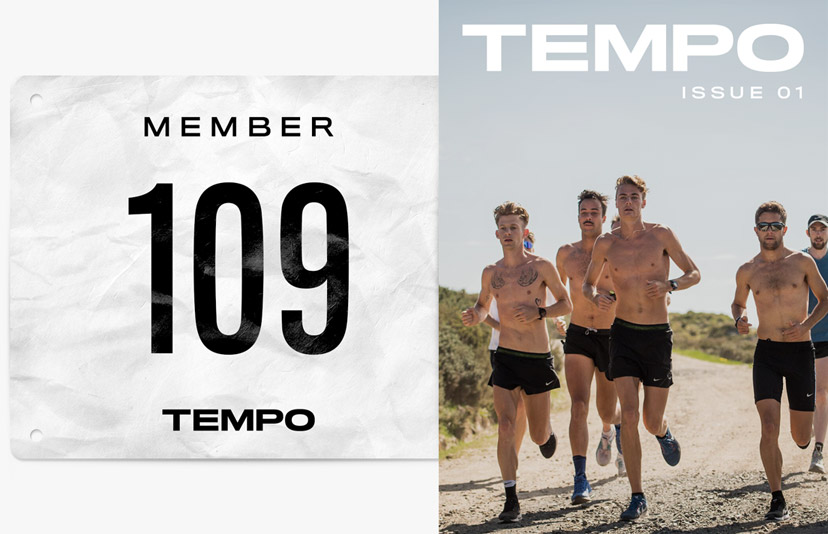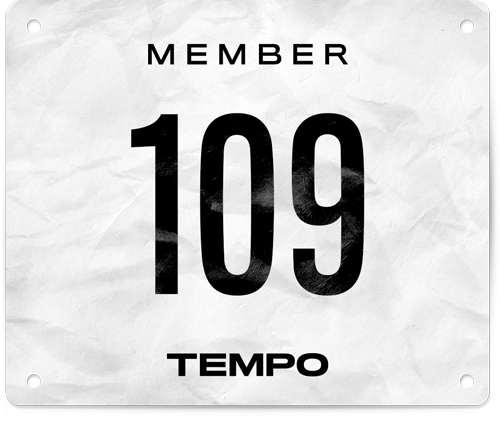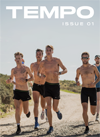Culture
A conversation with Mental Athletic’s Gabriele Casaccia
Exploring the Aesthetics of Movement
Mental Athletic was born from founder Gabriele Casaccia’s desire to offer a fresh perspective on running and its culture. Instead of focusing solely on the performance aspects of the sport, Gabriele emphasises “the aesthetic codes surrounding movement”. Based in global style centre Milan, and with a creative background in art direction and fashion, Gabriele has a self-declared obsession with aesthetics, and his lavishly produced, highly visual project – a magazine and media platform – draws inspiration from sources as diverse as botany and art. Gabriele envisions Mental Athletic as something for everyone, insisting that being a runner is not about pace or distance but about embracing the sport in its more vibey aspects.
“We are interested in exploring dynamism through an urban and creative lens. Mental Athletic is an ever-evolving quest devoted to the metaphysical escape that is running in all of its iterations through the exploration of a boundless archive of visual inspirations,” is how they put it in a recent media release.
“It's easy to find media that just talks about running and sport in general, but they just focus on performance. Instead, our idea is to focus on the emotion – the emotion and also the character.”
Gabriele Casaccia
Following the successful launch of its first issue last November, Mental Athletic is back with a diverse selection of remarkable editorial features. Highlights include Japanese fashion designer Jun Takahashi’s exploration of his morning run and its balance; ultra runner Lydia Oldham’s experiences of The Speed Project; and a selection of iconic moments with NYC crew Orchard Street Runners, including an intimate conversation between founder Joe DiNoto and photographer Ashley Gilbertson. The issue also features a spin-off of “Welcome to Earth” by Satisfy, posing a humorous Q&A between aliens and humans about running; an extract from Paris-based design studio Avoir’s research on “the semantics of performance”; a report on a Moroccan getaway with Salomon; and Julian Klincewicz’s poetic photographic research on flowers, plus many more expansive takes on what can be included in a “running magazine”.
As the second issue came out, Tempo called Gabriele to talk about the project’s origins, the current state of running culture and how Mental Athletic wants to set running journalism on a new course.
Gabriele Casaccia: The reason I founded Mental Athletic is my passion for running and a desire to communicate something that is different for the sport. The goal is really to be able to spread a new culture, a new language on the sport.
It's easy to find media that just talks about running and sport in general, but they just focus on performance. Instead, our idea is to focus on the emotion – the emotion and also the character. You know, to excite people with all the beauty of the culture of this sport that has not been shown, something that’s related to performance but also to the community and what it’s like to be part of that.
We feel like we’re linked to a new ecosystem of creativity and a community of people that wants to have a sense of wellness and take care of themselves. This is why Mental Athletic is linked to the human spirit and nature. Personally, I started to run because, at the age of 30, I stopped clubbing and switched my life to something more genuine.
“Mental Athletic, the name itself, came from people joking about me because my whole profile was ‘mental aesthetic’ because I'm obsessive about the aesthetic around me.”
Gabriele Casaccia
It’s similar in a way to how Tempo came to life. For us, it was about elevating running culture and not just looking at it from an Australian viewpoint but taking an international view.
You know, when I first saw Tempo I didn't realise that it was from Australia. Someone told me that, and I thought you were from America. Tempo is very special for us because the way that you communicate is very innovative. I think we share similar values and tell stories that are genuine.
When talking about different media, especially those related to running, it can be quite boring. Looking back, when running media began in the ’70s it was a completely different project. It was just talking about, you know, what can be the right performance, what can be the right diet. If we [at Mental Athletic] talk about diet, we talk about food, what we like to drink as a wine, what food experiences we want to seek out in different cities.
“There are three main pillars to Mental Athletic … the aesthetic … the ethic that we call the culture, and … of course, the athletics that we focus on.”
Gabriele Casaccia
When did you launch Mental Athletic?
We launched it officially last November. Before that, I think it was last March, we were in Los Angeles for The Speed Project. I was there as the creative director for a project with Diadora. That was the first time that I released pictures with the Mental Athletic logo. Then we came back to Milan and I said, ‘Okay, this is the right moment.’ It’s the right time to showcase Mental Athletic and to develop a project.
So then, in four months, I created the team. I left my previous job as a creative director and started working on this project. We launched at the ISPO in Munich, and it was a great success. And now, it’s been less than one year that we have officially existed.
But it's a project that I had in my inbox for a long time. Mental Athletic, the name itself, came from people joking about me because my whole profile was ‘mental aesthetic’ because I'm obsessive about the aesthetic around me. And so I started to post running things and people joked about me, saying, ‘Oh, you have to call it Mental Athletic.’ So I started to play with the visual identity, because for me it's important to work on something until it’s very attractive and people will look at it and remember it. My references were brands like Supreme; you know, brands which have a strong identity.
“We feel like we’re linked to a new ecosystem of creativity and a community of people that wants to have a sense of wellness and take care of themselves.”
Gabriele Casaccia
The design and aesthetic comes through so strongly. So it makes a lot of sense to hear this from you, that you have this background in fashion and art direction.
You know, there are three main pillars to Mental Athletic. The first is the aesthetic, so we want to excite people through the images, through the words, the details … Another one is the ethic that we call the culture, and we think of that as being everything that is around us. And the third pillar is, of course, the athletics that we focus on.
We love the interaction between what you're doing online, on social media, and in the print project. How do you see those things balancing?
My dream, because I'm a serial book collector and magazine fanatic, is to create something that can be a tool for people, a collectible, something that can be in your archive on your bookshelf. But of course, digital is so important in this world, it's what keeps us connected. If you want to build, to link with the world, Instagram is now the social media that everyone uses. And this also makes the difference in how people view you, you know? But for me, the print version is something that is my passion, and it's something that, in the future, is tangible.
With the first issue you did multiple covers, which created these different editions for the issue. Have you done that again?
Yeah, we've done the same thing this time. One cover, it's Jun Takahashi, one cover is Lydia Oldman. One cover is Distance with On. And then the fourth cover, it's what we call ‘the crazy one’, is all related to flowers, with a selection of work from Julian Klinchewicz, an LA-based photographer.
Apart from you, who produces Mental Athletic?
We have a great team. We have people with backgrounds in architecture, contemporary art, design, as well as some of us coming more from the sports side. We're like a bunch of friends who run, and every one of us comes from a different way of running.
What kind of running do you do yourself? And do you have a particular crew or community that you run with? We did notice with the first issue that you spoke to a lot of trail runners – do you have a connection to that style of running?
I don't do any specific type of training, but [Mental Athletic designer] Marco [Piccardi] and I have come from trail running. Because Milan is a city that’s near the mountains; running in nature is so different. Of course, we run every single day in the city, but we love to be in touch with nature. And while Mental Athletic doesn't have a running group, we like to support other crews. It's just the beginning, so we'll see in the future what different activities we can do with people.
We look forward to following that. Thanks so much for talking with us today.
Thank you very much. If you ever make it to Italy, we would love to share some time for eating and running together.
Love that. They're a good combination, eating and running. The more you eat, the more you need to run, and vice versa. Gabriele, thank you.


